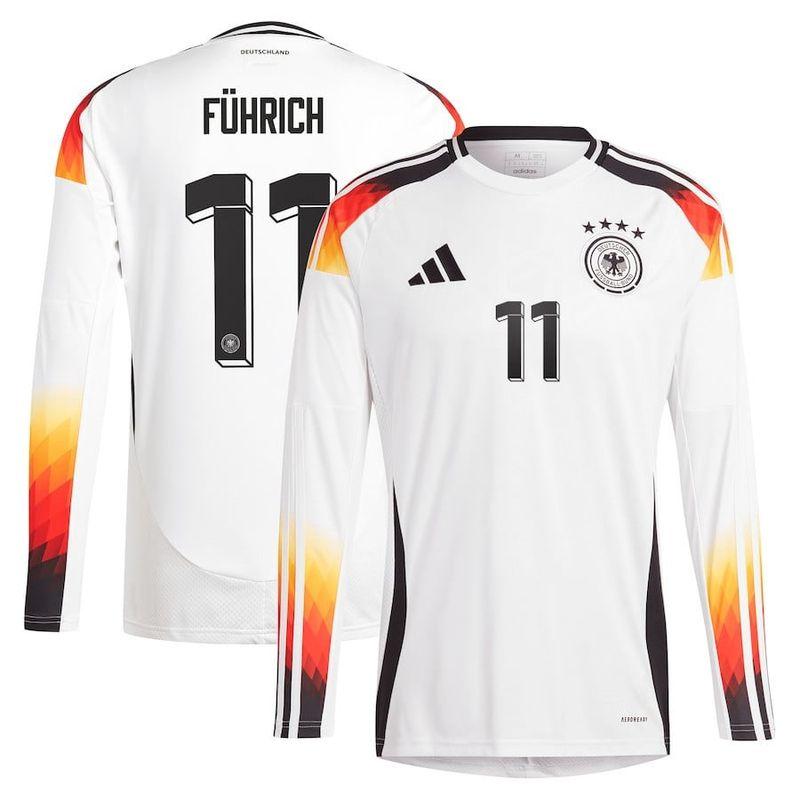Notifications

8 minutes, 46 seconds
-12 Views 0 Comments 0 Likes 0 Reviews

Germany's national football team has a rich and storied history, not just in terms of its victories and legendary players, but also in the evolution of its kits. From the early days of international football to their modern, sleek designs, Germany's national team kits have undergone several transformations, each representing different eras of footballing excellence. The Germany retro jersey is an essential piece for any fan, symbolizing the team’s iconic moments. In this article, we will explore the history of Germany’s national team kits, how they have evolved over the years, and provide tips on how to wear both classic and modern designs with style.
Germany’s football kits in the early 20th century were relatively simple, reflecting the more modest approach to the sport during that time. The team primarily wore white shirts paired with black shorts, a design that would go on to become iconic in football. The simplicity of the kits, with no bold stripes or logos, emphasized the focus on performance over fashion.
In the 1950s and 1960s, the German team began to embrace more structured designs, with subtle details like the use of black and white elements. The 1954 World Cup victory, known as “The Miracle of Bern,” was one of the first major tournaments where the German team’s kits gained international attention. The design was still understated but represented the grit and determination of the team. Fans who wear a Germany retro jersey today often reflect on this era with nostalgia, celebrating a golden period of German football.
The 1970s marked a significant shift in football kit design, as manufacturers began to experiment with color and bold patterns. Germany’s kits became more distinctive, with the introduction of green, yellow, and black elements — colors that would become synonymous with their footballing identity.
The 1974 World Cup was a turning point for Germany's kit designs, as they unveiled a new shirt featuring green and black stripes. This design not only looked stylish but also symbolized the nation's footballing identity. This jersey is often considered one of the most iconic in Germany’s history, and modern fans still celebrate this retro design today.
In the 1980s, the kits continued to evolve, with the iconic green and white designs becoming even more prevalent. The 1980s saw a blend of bold patterns and a more streamlined design, with the introduction of various sponsor logos on the jerseys. Germany’s 1990 World Cup victory, for example, featured a jersey with a geometric design that helped define that era.
Tip on Wearing: If you’re a fan of these classic designs, a Germany retro jersey from the 1970s-1980s can be a great addition to your collection. These jerseys can be worn casually or to sporting events, giving you a chance to honor Germany’s legendary footballing past while embracing the vintage feel.
The 1990s was a transformative decade for football kit designs, with manufacturers pushing the boundaries of innovation. During this era, Germany’s kits became more colorful and complex, featuring bold graphics and patterns. The 1990 World Cup victory saw the introduction of a unique jersey, which sported black, red, and gold colors arranged in a striking geometric pattern. This design was revolutionary at the time and is still one of the most memorable kits in football history.
In the mid-1990s, Germany’s kits continued to evolve, and the kits began to have a more modern, sleek look while still incorporating elements of the nation’s traditional colors. The late 1990s marked a time when Germany’s kits became widely recognized as a symbol of the team’s discipline, unity, and success.
Tip on Wearing: If you’re fond of the 1990s designs, consider wearing one of the retro-style jerseys from this period. These jerseys are great for nostalgic fans who want to show their appreciation for Germany's historical victories. They can be paired with jeans or shorts for a laid-back, sporty look.
As Germany entered the new millennium, their kits became more minimalist and sleek. The design became cleaner, focusing on a more streamlined, modern look while maintaining the traditional black, white, and gold color scheme. The 2002 World Cup was a highlight of this era, with Germany wearing a kit that was both sharp and simple. The minimalism of the design reflected the evolving global trend toward modern, high-performance sportswear.
The 2000s also saw the introduction of advanced fabric technology, with jerseys that were lighter and more breathable. The designs were crafted to enhance players' performance on the field while also offering a clean aesthetic for fans off the field. By the time the 2006 World Cup arrived, Germany’s kits became synonymous with modern football fashion, offering a perfect blend of form and function.
When it comes to wearing Germany retro jerseys or modern kits, the key is to embrace the style that resonates with you the most. Here are a few tips on how to wear these jerseys:
Casual Outings: Pair your jersey with denim jeans or shorts for a comfortable, everyday look. Add sneakers to complete the sporty vibe.
Game Day: If you're attending a match or watching from home, team your jersey with comfortable joggers or track pants for an active and relaxed look.
Layering: For colder weather, wear your retro or modern Germany jersey under a casual jacket or hoodie. This gives you the option to layer up while still showing off your team pride.
The evolution of Germany’s national team kits reflects the progress of football itself, from simple beginnings to the high-tech, performance-focused designs of today. Whether you’re drawn to the nostalgic Germany retro jersey or prefer the sleek lines of the modern kits, there’s a style to suit every fan. Embrace the design that speaks to you and wear your jersey with pride—whether it’s for a game day, casual outing, or as part of your sports fashion collection.

